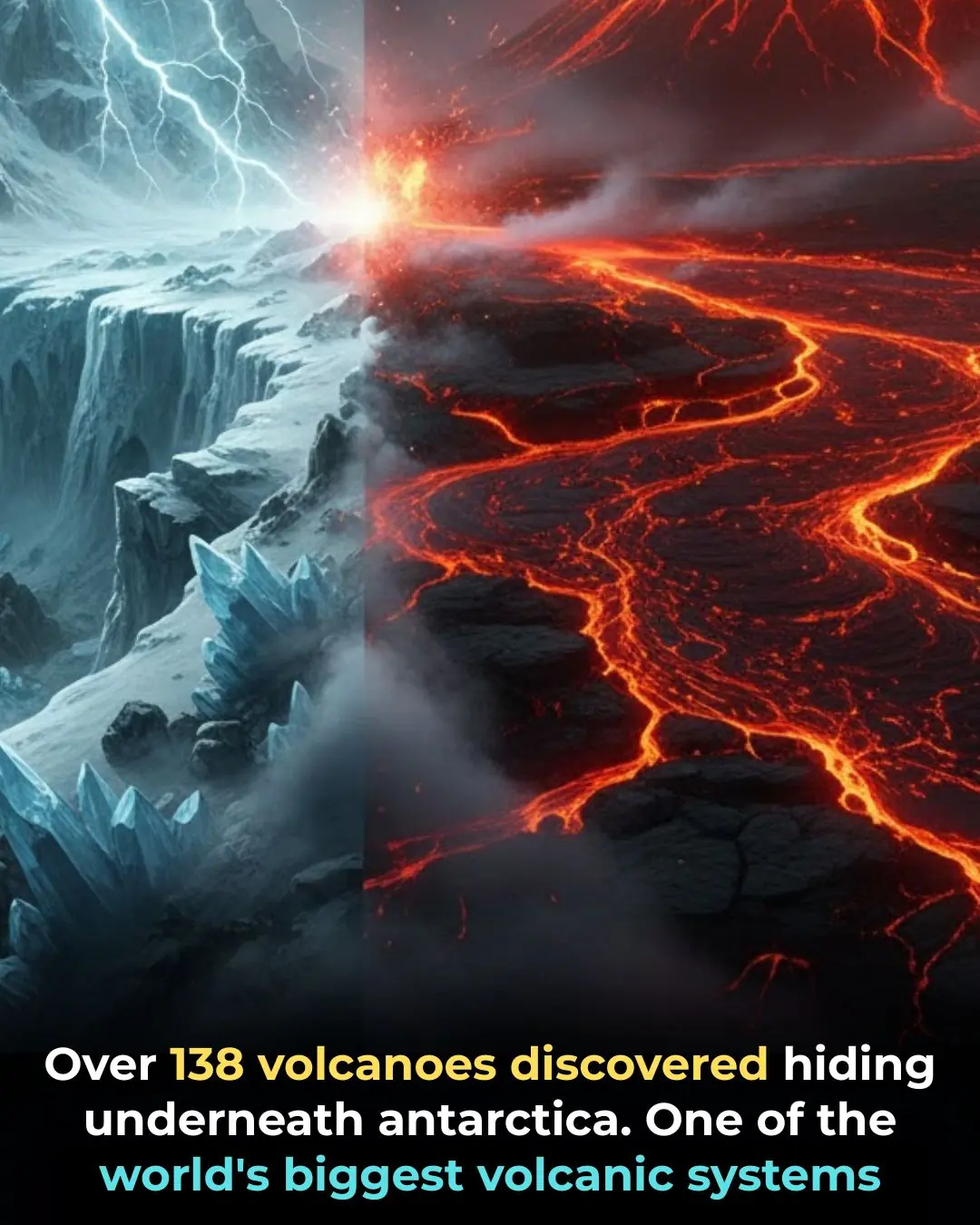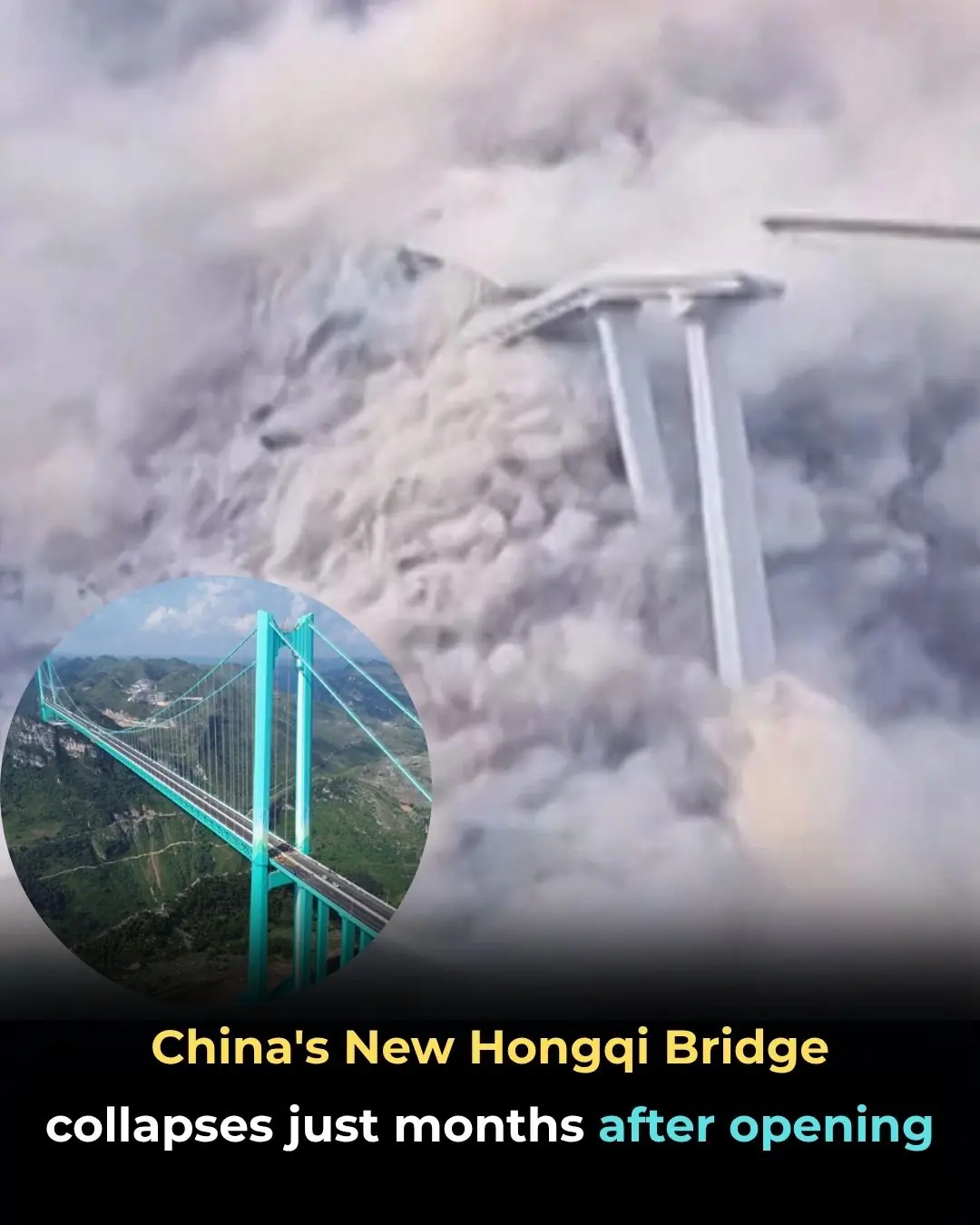
Fire Beneath the Ice: Antarctica’s Hidden Volcanoes

Antarctica is often imagined as a vast, silent desert of ice, untouched by time. But beneath its frozen surface lies a landscape far more dynamic — and far more explosive — than anyone expected. Recent research has revealed that the West Antarctic Ice Sheet sits atop one of the largest volcanic regions on Earth, containing more than 138 volcanoes, many of them towering giants hidden under several kilometers of ice.
This remarkable discovery was made by scientists from the University of Edinburgh, who used a combination of ice-penetrating radar, satellite imagery, and detailed digital elevation models to map the terrain beneath the ice. Their work uncovered 91 volcanoes that had never been identified before, buried under ice layers reaching up to 4 kilometers (2.5 miles) thick. Some of these volcanic peaks rise over 3,800 meters (12,500 feet) — comparable to the tallest mountains in the European Alps.
These hidden volcanoes form part of the West Antarctic Rift System, an enormous tectonic rift valley stretching across the continent. This region has long been suspected of volcanic activity, but the scale revealed by recent research far exceeds previous estimates. While most of these volcanoes are considered dormant, their presence is anything but harmless. Scientists believe that geothermal heat from this volcanic system may be contributing to the thinning and melting of the overlying ice sheet. This heat can weaken the base of the ice, increasing glacial flow and potentially accelerating Antarctica’s contribution to global sea level rise.
Understanding this volcanic network is crucial, because the melting of the West Antarctic Ice Sheet is already one of the most significant uncertainties in climate change predictions. Studies published by the British Antarctic Survey (BAS) and the National Snow and Ice Data Center (NSIDC) show that even small changes in geothermal heat can influence how quickly ice melts from below. Additional research from the Journal of Geophysical Research: Solid Earth suggests that volcanic activity may play a more active role in long-term ice stability than previously recognized.
Although Antarctica appears frozen, distant, and unchanging, the continent sits above a hidden world of fire that continues to shape its evolution. The discovery of this vast volcanic province not only reshapes our understanding of Antarctic geology but also raises important questions about how these deep-earth processes might affect the planet’s future climate.
Antarctica may look calm on the surface — but beneath the ice, a fiery world is still very much alive.
News in the same category


Jane Seymour declares ‘70 is the new 50’ after finding love again following four marriages

Tom Cruise, 63, seen laughing with Sydney Sweeney, 28, at Governors Awards after split from Ana de Armas

Cruz Beckham, 20, banned from driving after getting 2 speeding tickets

Ex-Disney star ripped for ‘demonic’ app that lets users talk to AI versions of dead relatives: ‘Literally a ‘Black Mirror’ episode’

Cardi B feels ‘threatened’ after Offset’s paternity comment on singer’s baby with Stefon Diggs: ‘My life is in danger

Denise Richards speaks out after being granted permanent restraining order against ex Aaron Phypers

China’s New Hongqi Bridge Collapses Just Months After Opening

Rebecca Gayheart reveals living situation as ex Eric Dane battles ALS: ‘Super complicated’

Denise Richards speaks out after being granted permanent restraining order against ex Aaron Phypers

Reason Sara Davies is ‘gutted’ Strictly Come Dancing star Vicky Pattison was voted out of the competition

Emmerdale star Bradley Riches shares lengthy social media message as he celebrates soap achievement

Prince William and Kate Middleton ‘to make Royal Variety performance return’ after two year hiatus

Jamie Laing admits ‘I’m really scared’ as he shares baby update

‘It Was Neglect’: Birmingham Police Haven’t Made an Arrest After Social Worker Left 3-Year-Old Boy In Hot Car to Die Following Shopping Trip; Outraged Family Demands Justice

ITV Emmerdale fans 'work out' villain will violently take down Celia in unexpected twist

‘No First Team Reps UNC?’: Shannon Sharpe Says Kevin Stefanski’s ‘Malpractice’ Is Reason For Shedeur Sanders Rocky Two Quarters Against Desperate Ravens

Alison Hammond reveals 15 year long feud with 'very rude' I'm A Celebrity star

‘Thought This was AI’: Fans Lose It Over Spike Lee’s Unexpected Gift to the Pope, But All Anyone Can Talk About Is the Director’s Head
News Post

Jamie Laing admits ‘I’m really scared’ as he shares baby update

Jane Seymour declares ‘70 is the new 50’ after finding love again following four marriages

Tom Cruise, 63, seen laughing with Sydney Sweeney, 28, at Governors Awards after split from Ana de Armas

Cruz Beckham, 20, banned from driving after getting 2 speeding tickets

Ex-Disney star ripped for ‘demonic’ app that lets users talk to AI versions of dead relatives: ‘Literally a ‘Black Mirror’ episode’

Cardi B feels ‘threatened’ after Offset’s paternity comment on singer’s baby with Stefon Diggs: ‘My life is in danger

Denise Richards speaks out after being granted permanent restraining order against ex Aaron Phypers

China’s New Hongqi Bridge Collapses Just Months After Opening

He Drank Sugary Beverages Instead of Water — Doctors Removed Nearly 300 Kidney Stones

Rebecca Gayheart reveals living situation as ex Eric Dane battles ALS: ‘Super complicated’

10 Benefits of Vaseline For Skin, Lips & Hair

Denise Richards speaks out after being granted permanent restraining order against ex Aaron Phypers

Reason Sara Davies is ‘gutted’ Strictly Come Dancing star Vicky Pattison was voted out of the competition

Emmerdale star Bradley Riches shares lengthy social media message as he celebrates soap achievement

Prince William and Kate Middleton ‘to make Royal Variety performance return’ after two year hiatus

Jamie Laing admits ‘I’m really scared’ as he shares baby update

‘It Was Neglect’: Birmingham Police Haven’t Made an Arrest After Social Worker Left 3-Year-Old Boy In Hot Car to Die Following Shopping Trip; Outraged Family Demands Justice

ITV Emmerdale fans 'work out' villain will violently take down Celia in unexpected twist
